The best travel itineraries when visiting Malaysia
There are many different routes you can take through beautiful Malaysia. Public transportation is well organized, so you can usually travel between the country’s many amazing destinations in a variety of ways. Whether you choose to rent a car, take local buses, or hop on a domestic flight, Malaysia is a relatively affordable destination — a week of car rental or a couple of flights won’t blow your vacation budget.
The ultimate itinerary is the one you build based on your own preferences. If nature is your thing, the peninsula has several stunning national parks to explore. You could also consider visiting Malaysian Borneo — the other part of Malaysia — with its incredible nature parks and world-class underwater experiences. You can get there quickly with a short domestic flight (about 2.5 hours). If you love big, bustling cities, you can easily include those in your trip. Prefer a bit of culture too? There are plenty of spots where you can soak up Malaysia’s rich heritage. Want to unwind on the beach or go diving/snorkeling in crystal-clear waters? There’s a huge range of tropical islands to choose from.
A mix of all these experiences is totally doable — and actually what many travelers prefer. While most places can be reached in different ways, some transportation options are just more convenient (usually to save time and hassle). For example, you can get to Langkawi by land and ferry, but a quick domestic flight from Kuala Lumpur is way easier. There are plenty more examples like that.
How many days is entirely up to you
Of course, the longer, the better, but you can also get a good impression of the country in two weeks. Three weeks would be ideal, and longer than that is possible, but not necessary.
If you only visit the peninsula, three weeks will be enough for a beautiful and varied trip full of highlights. With three weeks, you could also consider including a visit to Malaysian Borneo in your itinerary. If slow travel is your thing, make a few choices within those three weeks and accept that you won’t be able to see everything in one trip. Stay at each place for at least 4 or 5 days and enjoy the destinations a little bit more. If you have 4 weeks or more, you could also decide to stay longer in Malaysian Borneo.
Question: I would like to travel for two weeks. Would it be worthwhile visiting Malaysian Borneo?
Answer: That’s perfectly fine. A few days in KL upon arrival, followed by a nice trip of about 10 days in Malaysian Borneo. A flight from Kuala Lumpur takes 2.5 hours at most.
On our extensive page with all the major highlights of the country, we’ve outlined for each destination how long (or short) you should stay to get a good impression. Longer is always better, and shorter means more haste and less to see on the spot. We’ve also given each destination a (subjective) rating, which should be seen more as a guideline and for comparison.
Are you traveling with (small) children? Then keep it simple and reduce the number of trips. Choose destinations as a base and explore the highlights in the region from there. This way, you can easily spend a week on an island like Penang or Langkawi. Kota Kinabalu is also a great base. Even Kuala Lumpur would be a great choice for a week (but then choose a luxury Airbnb with a pool).
Most popular Malaysia itinerary: Start and end in Kuala Lumpur
The most common destination to start your trip through Malaysia is Kuala Lumpur, the capital of the country. This is where you’ll find KLIA, Malaysia’s international airport, where all intercontinental flights arrive. Kuala Lumpur is a pleasant city and an ideal place to explore for a few days. Hotel prices are among the lowest in the world, and you can easily book a luxurious apartment via Airbnb.
After spending a few days in Kuala Lumpur (we recommend at least 3 days/2 nights), it’s time to move on. Some travelers opt for a separate trip (there and back) to Malacca (3 days/2 nights, preferably on the weekend because of the Jonker Street Night Market), or travel by bus or rental car to Ipoh or the Cameron Highlands. Both destinations are worth visiting, and you can get a good impression if you stay 3 days/2 nights (giving you at least 1 full day).
Alternatively, after Kuala Lumpur, you can start with a visit to Taman Negara, a beautiful national park about 3.5 hours from the capital. After this stop, which usually lasts 2 or 3 nights, you can travel to the Cameron Highlands (or directly to Ipoh or Penang). As with Malacca, you can also return to Kuala Lumpur and travel on from there.
After these stops, you’ll travel on to Penang, a great island with the capital Georgetown, which, like Malacca, is a UNESCO World Heritage Site. You can easily spend several days here, and a minimum stay of 4 days/3 nights is recommended. If you’d like to visit more islands like this, take a domestic flight to the nearby island of Langkawi. It’s a beautiful island with plenty to see and do to easily keep you entertained for 4 days.
The period from November to April is also a great time to travel by boat to the Thai island of Koh Lipe for diving and snorkeling. This island is less suitable for visiting from May to October due to the monsoon. During that period, travelers often head to the east coast of the Malaysian peninsula, where you can find beautiful islands like Perhentian, Redang, and Tioman. These islands are perfect for a stay of at least five days. Shorter stays are possible, but they mean traveling quite a long way for a relatively short visit.
From Penang, you can take a direct flight to Kota Bharu for the boat to Perhentian or Redang. From Langkawi, you’ll first fly back to Kuala Lumpur and then on to Kota Bharu or Kuala Terengganu. You can also go to Johor Bahru for the boat to Tioman. An alternative is to drive to the east coast from Penang with a rental car. On the way, you’ll pass Royal Belum, a beautiful rainforest where you can easily spend 3 or 4 days (in that case, a visit to Taman Negara might be unnecessary). You can return your rental car at Kota Bharu airport, or leave it at the parking lot in Kuala Besut where the boat to Perhentian departs.
After visiting the islands, you’ll continue your journey. Depending on the days you have available, you could fly back to Kuala Lumpur, or continue southeast in your rental car, passing the charming fishing village of Cherating. Near Kuala Terengganu, you’ll also find the beautiful Lake Kenyir, but this is quite off the beaten track (not touristy). After Cherating, you’ll drive towards Kuala Lumpur. You could also make a stop at Taman Negara, but then you’d have to drive there yourself in a rental car (we’ve done this, and it’s perfectly doable). From the aforementioned islands, you can also take a flight (or bus) back to Kuala Lumpur.
A travel itinerary like the one mentioned above is easy to put together yourself. However, you can just as easily outsource it if you don’t feel like doing all the organizing. Well-known local travel organizations can book a trip based on this program in just a few clicks.
Travel itinerary Malaysia including Malaysian Borneo
Nature lovers often include a visit to Malaysian Borneo as part of their trip through Malaysia. As mentioned earlier, the short flight time (a maximum of 2.5 hours) make adding it to your itinerary an easy choice. Most travelers choose between the states of Sabah or Sarawak, or a combination of the two (via a short domestic flight). It’s not very easy to travel between the two states by land, but that’s not an issue because of the many daily flights.
Sabah
Sabah has many nature parks with beautiful jungles, plus the enormous Mount Kinabalu, which you can climb. This part of Borneo is surrounded by many tropical islands. There’s plenty to do to keep you entertained for weeks. Some travelers even spend their entire vacation in Malaysia in Sabah. If you combine Sabah with western Malaysia, it’s best to choose a few destinations that will fill about a week. If you visit national parks here, you might consider skipping the national parks on the Malaysian peninsula.
Normally, Kota Kinabalu is the starting point. From here, you can visit various great places, either independently or by rental car. These include the Klias Wetlands, the Kiulu River (for rafting), Kokol Hill, and Mantanani Island.
There’s a dense public transportation network with local buses, so in many cases, this is also an excellent option for getting around. The starting point for a beautiful jungle adventure is usually the city of Sandakan. You can fly directly to Sandakan from Kuala Lumpur, or several times a day from Kota Kinabalu. The Kinabatangan River delta is nearby, as are the Tabin Wildlife Refuge and Danum Valley (though it’s faster to fly to Lahad Datu).
The most beautiful islands can be found around Semporna in the east of Sabah. You can get here by flying to Tawau or by transferring from one of the nature parks mentioned above. Take a look at our overview of highlights to get an idea of the best (minimum) number of days you can spend at each destination.
Sarawak
Sarawak has its own unique character, and you can easily spend a week or more here as well. Highlights include the city of Kuching, Bako National Park, Batang Ai, Semenggoh Orangutan Rehabilitation Center, and the absolute top destination, Mulu National Park. The latter can only be reached by flight from Kuching, Miri, or Kota Kinabalu, and is one of Malaysia’s most beautiful attractions.
All destinations around Kuching can be visited by Grab or rental car. Some other destinations, such as Batang Ai, can be visited on a tour (several days, including everything). Mulu National Park usually requires a minimum stay of 2 nights (3 days/2 nights), and the nature park offers a range of accommodations from affordable to luxurious. Unlike Sabah, diving and snorkeling are not as popular in Sarawak, also because there are simply fewer tropical islands along the state.
Backpacker itinerary: Start in Langkawi
A large portion of backpackers who explore all of Southeast Asia begin their journey in the north (including China and Vietnam) and then slowly make their way south, eventually ending up in Indonesia (or Australia). A popular way to travel from Thailand to Malaysia is by sea, specifically from the island of Koh Lipe in Thailand to the island of Langkawi in Malaysia. There are daily boats from Koh Phi Phi and Koh Lanta (popular Thai islands) to Koh Lipe.
Backpackers then follow a fairly standard route to the south of Malaysia. After spending a few days in Langkawi, they typically fly to Penang (a cheap, 20-minute flight). Alternatively, they take a ferry to Kuala Perlis and then a bus to Penang. Penang is also a great place to spend a few days. The next destination is usually the city of Ipoh (known for great food and cool rock temples), or they travel directly to the Cameron Highlands (3D/2N), Malaysia’s tea plantations.
After Cameron Highlands, you can continue to Taman Negara (3D/2N) or head directly to Kuala Lumpur. You can also go straight from Kuala Lumpur to Taman Negara. Malacca is another popular destination (3D/2N). In the far south, you’ll find Singapore, a neighboring country to Malaysia. This modern metropolis is also great to explore in a few days. From here, you could also travel to Tioman, a beautiful island paradise just a few hours away from Singapore. After Malaysia/Singapore, you can easily continue on to Indonesia or the Philippines. You could also include Malaysian Borneo in your itinerary.
Destinations and how to get there
- Kuala Lumpur: airplane, rental car, bus, minibus & train
- Penang: airplane, rental car, bus, minibus & train
- Langkawi: airplane or bus (+ ferry from Kuala Kedah or Kuala Perlis)
- Pangkor: rental car or bus
- Malacca: rental car, bus or taxi
- Taman Negara: rental car, minibus or bus (+ longtail boat across the Tembeling River)
- Cameron Highlands: rental car, minibus or bus
- Royal Belum State Park: rental car or local bus
- Ipoh: rental car, bus or train
- Kota Bharu & Perhentian: airplane, rental car, bus or minibus
- Kuala Terengganu (including Redang): Plane, rental car or bus
- Tioman: Plane, bus or rental car
- Johor Bahru: Plane, bus, train or rental car
- Kuching: Plane (including from Kuala Lumpur)
- Kota Kinabalu: Plane (including from Kuala Lumpur)
- Sandakan: Plane (e.g. from Kuala Lumpur)
Ask specific questions regarding transportation to these destinations below in response to this article or post them in our closed Facebook group “Friends of Malaysia”.
Tips
- There are local and international tour operators offering wonderful tours of Malaysia. You often have the choice between group trips or individual trips. Some travel organizations even let you create a trip based on your own input and preferences. If you prefer to arrange everything yourself, you can still visit the websites of these travel organizations, as they provide detailed itineraries for each trip. You can draw inspiration from these when planning your own adventure, and it also gives you a good idea of what is possible within a given timeframe.
- Because airfares are so cheap, you can easily combine a visit to Malaysia with one to a neighboring country.
- Malaysia has a pleasant tropical climate and is a great destination year-round. The east of the peninsula has a monsoon period from November to March, but during this time, there are plenty of alternative destinations (this especially concerns some beautiful islands that are temporarily inaccessible).
- Singapore Airlines offers direct flights from Schiphol to Singapore, and this city is an ideal starting point for a trip through Malaysia. Singapore is definitely worth a visit on its own (you can get a good impression of the city in about 3 to 4 days), and from there, you cross the border where your journey through Malaysia begins.
- You must complete the MDAC (Malaysia Digital Arrival Card) at least three days before your departure to Malaysia. This can be done online through the official website. Please note that this is free of charge.
- Payments can easily be made with a debit card. We use cards from Wise and Revolut, both of which work fine in Malaysia, and we have yet to encounter a place where the card didn’t work. Cashless payment options are becoming increasingly common in Malaysia, though you will still need cash on the street.
- For Langkawi and Penang, there’s a mild monsoon between roughly April and September. Although it’s typically not too bad, heavy rain can occur during this period. We wouldn’t avoid the islands during these months (unlike the islands on the east coast, which are simply inaccessible during the monsoon).
- Booking a rental car via Rentalcars.com is easy. We’ve been booking through them for years. SunnyCars is a bit more expensive, but the service (and aftercare in case of issues) is excellent. If you find car rental in Malaysia stressful, SunnyCars is a good choice for extra security.
- Penang and Langkawi are beautiful islands with plenty to do beyond lounging on the beach. However, if you just want to relax on the beach (and dive or snorkel in crystal-clear waters) for a few days, consider islands like Perhentian, Redang, or Tioman.
- Taman Negara is a beautiful nature park on the Malaysian peninsula, and Royal Belum is another stunning option, although it’s harder to reach. The nature reserves on Borneo (like Danum Valley or the Kinabatangan river area) are on a whole different level, though. Nature lovers should definitely visit Malaysian Borneo someday.
- Be aware that the beautiful bounty islands on the east coast of the peninsula are closed (or severely restricted) to travelers from roughly November to March due to the rainy season. This period can bring intense weather, making these islands less appealing. Instead, you could visit islands like Penang, Langkawi (possibly Koh Lipe), or explore islands around Malaysian Borneo.
- Pangkor Island is somewhere between Penang and Langkawi in terms of atmosphere and options. It’s much smaller and just a 3-hour trip from Kuala Lumpur (accessible only by bus or rental car).
- Pulau Ketam is a day trip from Kuala Lumpur, offering an authentic fishing village where time seems to stand still.
- It’s best to book airline tickets well in advance, and for domestic flights, book directly with the airline. If there happens to be availability, you’ll have a short line of communication to resolve any issues.
- Genting Highlands is just an hour’s drive from Kuala Lumpur. It’s where locals go for entertainment, shopping, good food, and to gamble at the only casinos in the country. It’s a busy place, but if you like amusement parks and other indoor activities, it could be your kind of spot.
- We once did the following round trip: Kuala Lumpur (3D) -> Langkawi (3D) -> Koh Lipe (6D) -> Koh Lanta (4D) -> Ao Nang (Krabi) (3D) -> Kuala Lumpur (2D), and it was a wonderful three-week vacation.
- Book bus tickets via 12go.com, Redbus, or BusOnlineTicket.
- It’s a good idea to book entrance tickets in advance via Klook.com (this helps you avoid long queues on-site).
- A local SIM card is cheaper than an eSIM. You can easily buy one on arrival at KLIA by walking to the left immediately after entering the Arrival Hall (you’ll find several telecom shops in a row).
- It’s best to book hotels in advance (online). Be sure to check the terms and conditions, as the best prices often come with less favorable cancellation policies. An extensive breakfast is usually included, and in some destinations, it’s essential to book ahead to avoid the risk of the hotel being fully booked.
- Not a fan of big cities or have limited time to spend in Kuala Lumpur? Consider a bike tour with MikeBikes, which gives you a great introduction to the city in just a few hours.
- In big cities, you can also consider renting an apartment through Airbnb. We travel with our family and prefer booking a nice apartment with two bedrooms. These kinds of apartments often come with a huge shared swimming pool, and not infrequently, this pool is located on the roof of the complex (infinity pool).
- English is the main language in Malaysia, and everyone speaks it moderately to very well. Even in the most local kampungs, people speak English fluently.
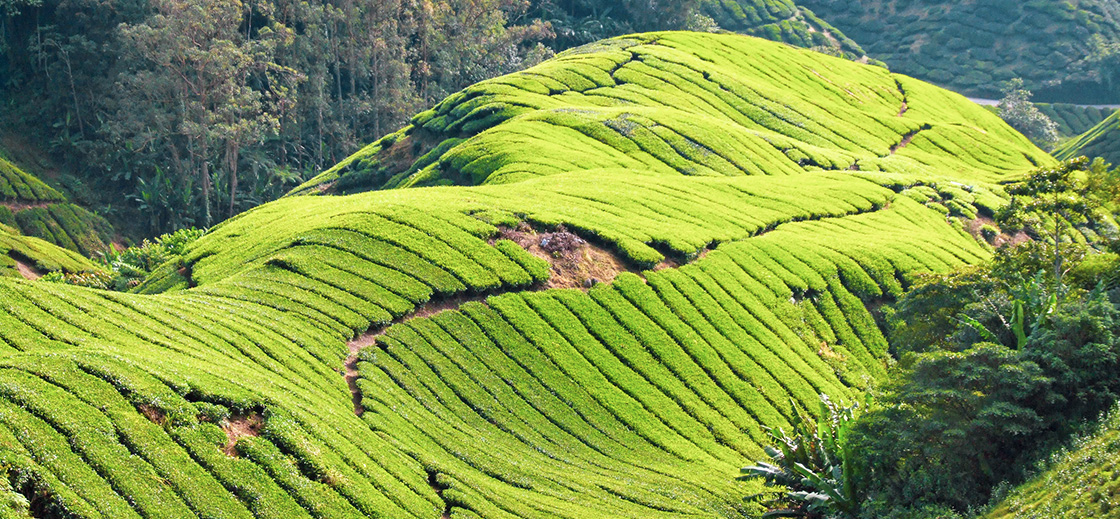
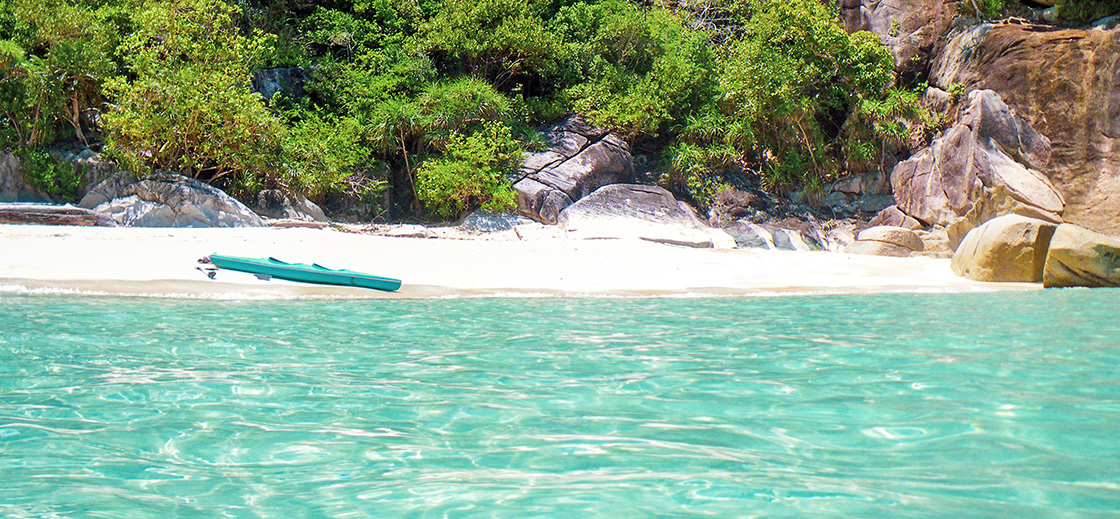
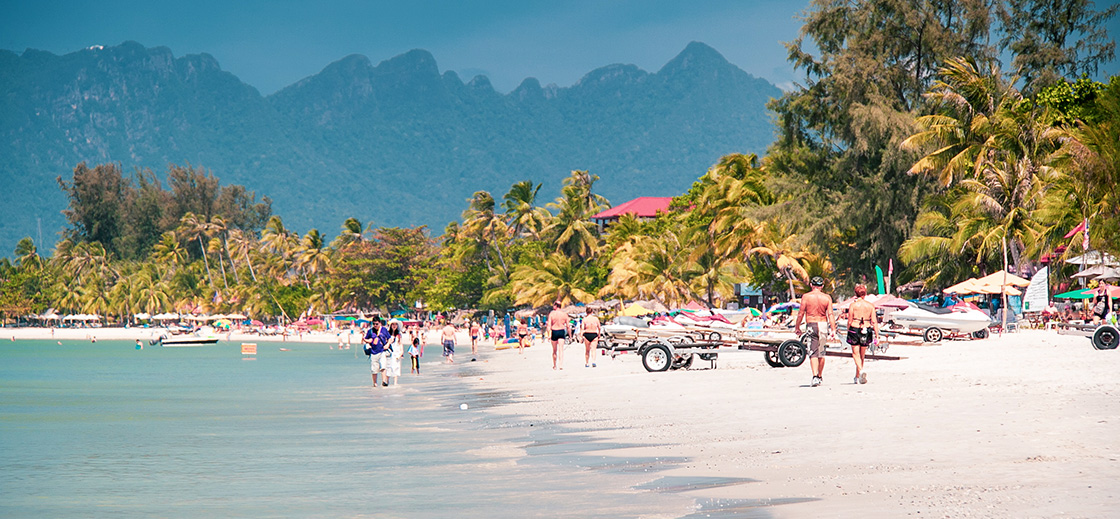
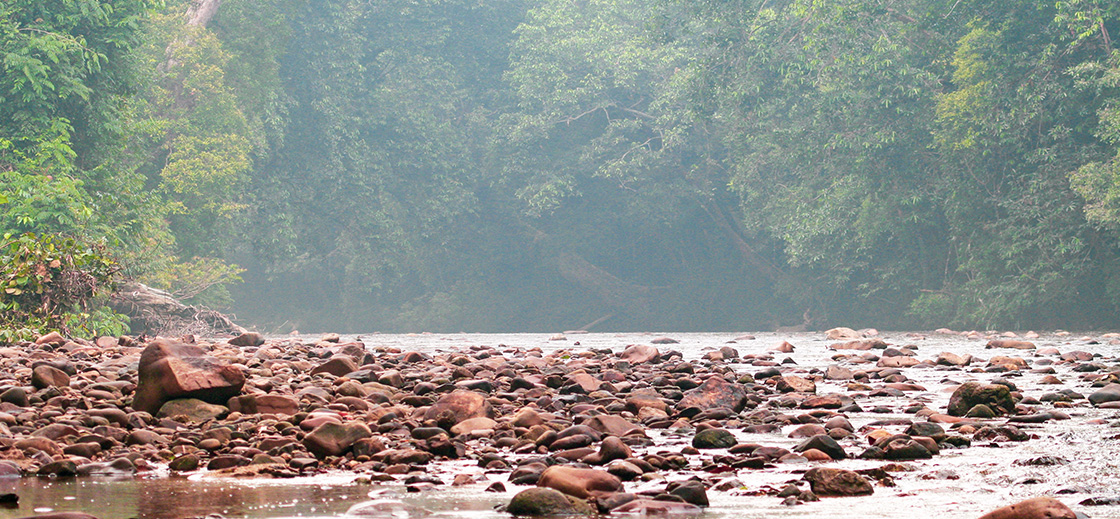
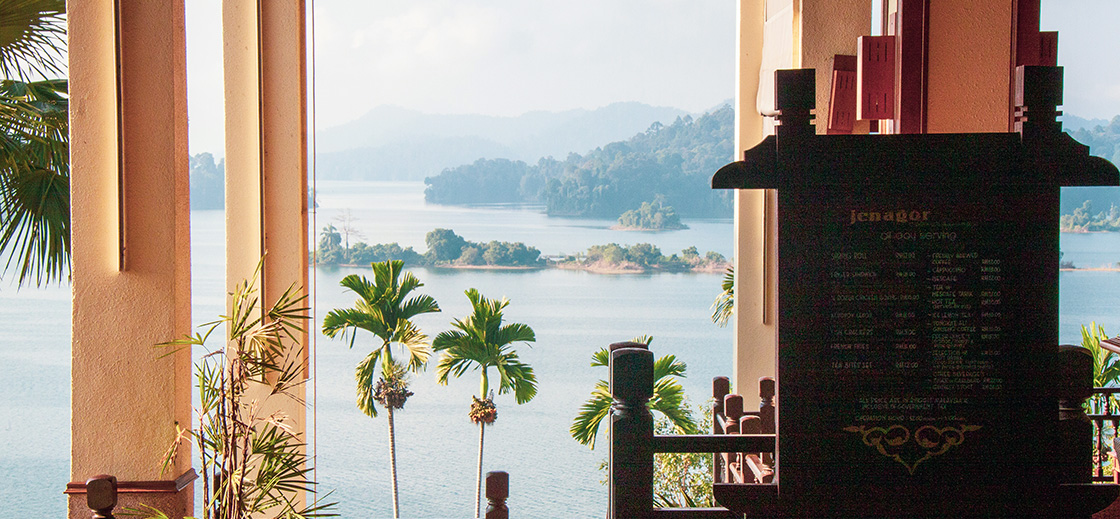
Violet
4 months ago
May 19, 2025 at 4:59 am
I visited Boh Tea Plantation last year. The tea fields were a sight! Having tea and scones with that view was pure bliss. Can’t wait to go back.